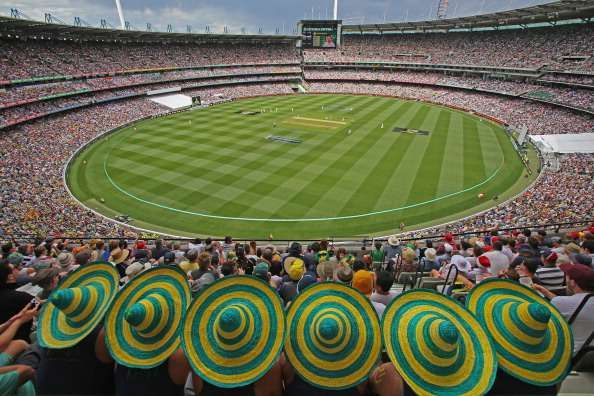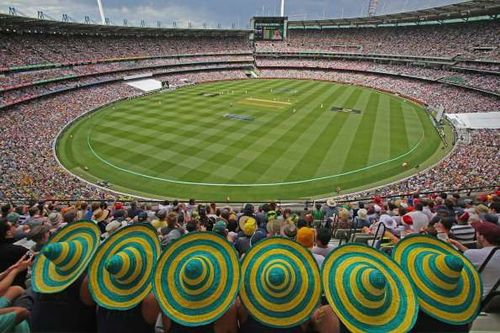
The historical significance of the Boxing Day Test

Following the tremendous fightback showed by the Pakistan cricket team, especially Asad Shafiq, who helped his side post the fourth-highest score in the fourth innings in Test history, thousands thronged to the Melbourne Cricket Ground (MCG) to see Misbah-ul-Haq’s side take on Australia in the second Test which began on Monday.
The annual Boxing Day Test is a matter of much pride and honour for the Australian cricketers and public alike and with the touring side not in a mood to surrender meekly despite their not-so-glorious-history Down Under, the manner in which they resisted the home side’s efforts in the opening Test had helped build up the enthusiasm to what was already the most anticipated match in the Australian Test calendar annually.
Though rain played spoilsport, at least for more than half the day, the festive spirit was well in order and the grandeur of the MCG just adds to the vibes generated on this special day. The fact that the Boxing Day is a national holiday obviously helps and that’s exactly where the crux regarding the origins of the Boxing Day Test lies.
The Boxing Day Test as we know it today became an annual tradition with the match played in 1980 at the MCG between Australia and New Zealand and the fact that the revolutionary Kerry Packer bought the television rights for cricket in Australia just a year prior, is no mere coincidence. The first so-called Boxing Day Test was played in 1950, when Australia took on arch rivals England but it was the third day of the match that fell on December 26.
The year 1952 saw South Africa achieving an 82-run victory over the host nation in the match that began exactly on Boxing Day at the MCG. The fortunes were much better in 1968 and 1975 when Australia recorded convincing victories over the mighty West Indies while the 1974 Test against England ended in a draw.
Three other Boxing Day Tests were played during 1967, 1972 and 1976 but it was not until 1980 that the MCG became the venue where the Boxing Day Tests would start to be played on an annual basis.
The year 1989 proved to be a minor exception as Australia faced off against Sri Lanka in a One-Day International match. The tradition has however carried on ever since with the daunting MCG proving to be the ideal backdrop for the match. Not surprisingly, the hosts enjoy a high winning percentage in Boxing Day Test matches.
They have won 20 of the 35 Boxing Day Test matches that has been played at the MCG since 1980 while tasting defeat on seven occasions.
Spectators have made it a point to make their presence felt at the MCG with match-day attendances showing an upward trend with years passing by. Monday saw more than 63000 people make it to the ground which is nevertheless way off the record mark set during the opening day of the 2013 Boxing Day Test which has an attendance of 91112 people.
The opposing team at the time being England a huge contributor in that no doubt.
Nations like South Africa and New Zealand also play a Boxing Day Test if they are at home during the time though the tradition has a long way to go when compared to Australia. Boxing Day is obviously a blockbuster in the English Premier League but as far as cricket is concerned, it is Australia and the MCG that rules the day like no other.